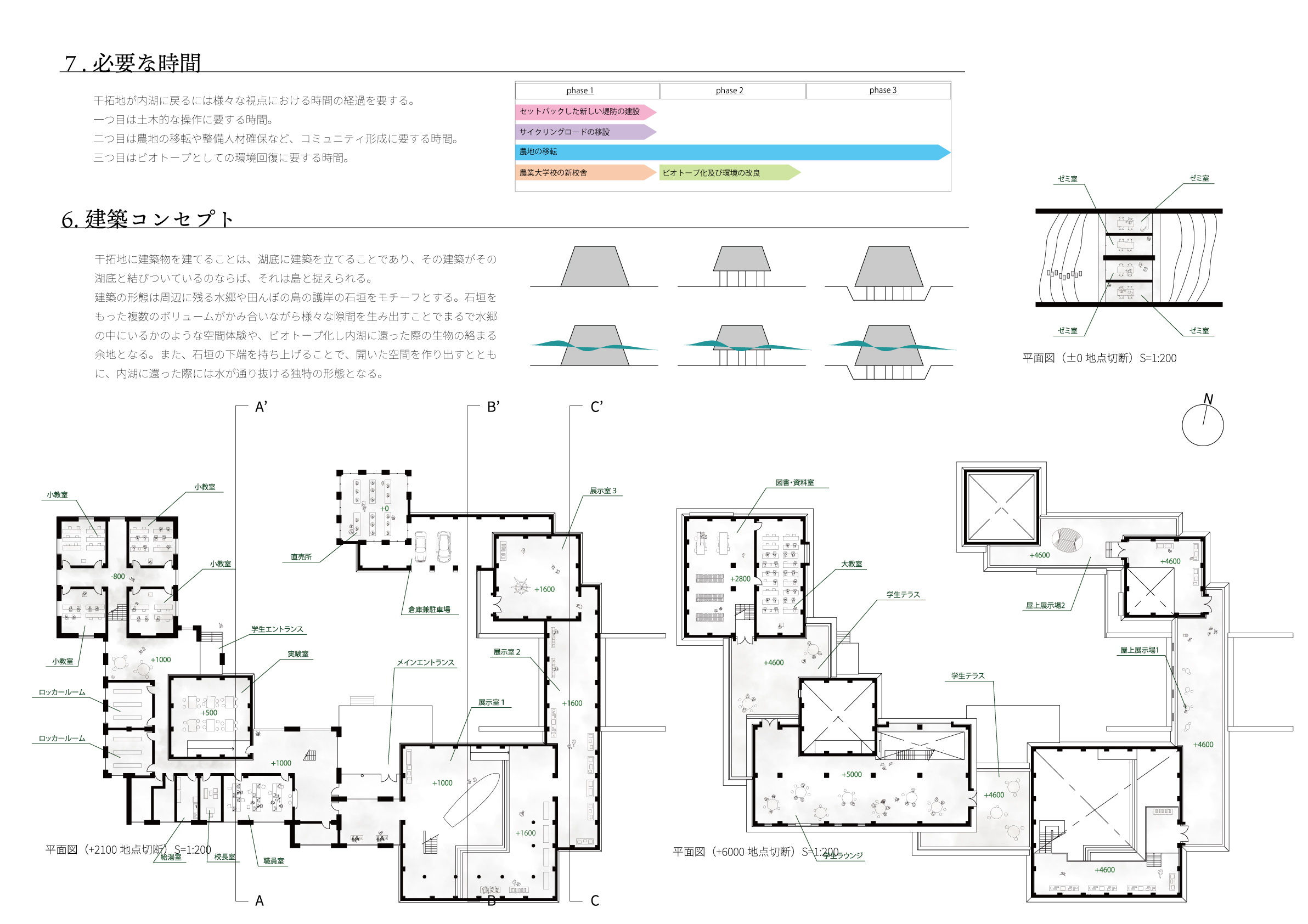半農半漁の島 -干拓の過渡期、内湖の帰期- Island of Half-Farming and Half Fishing
栗栖捷太 Shota Kurisu
作品コンセプト
- JP
- EN
身の回りにある自然は本当に自然なのだろうか。
日本は、明治以降において近代化が進み、海外から伝わった技術を用いた開発が各地で行われた。それは田園風景にも言える。自然を相手にしているように見える田園風景はもとより人間が手を加えた環境ではあるが、とくに近代化以降農業はより機械的な発展をはたした。
その発展の一つに干拓がある。滋賀では干拓によって本来の湖底を露出させた平坦で広大な風景が生み出されたが、人々はその壮観さやそこで得られる農業生産物に気をとられ、干拓がどれほど暴力的な行為であったかや、そこにあった湖や海とそれにかかわる営みを意識できずにいる。科学技術の発展や近代化がもたらした破壊がどれほどの影響力を持っているかを省みる必要がある。
そこで、干拓地を欧州の近代的な農景観を貼り付けた自然と捉え、それをめくりあげて内湖へと還していくことで、干拓のもたらした変化を逆行して体感する空間を作り出す。
Is the nature around us really natural?
In Japan, modernization has progressed since the Meiji era, and development using technology transmitted from overseas has been carried out in various places. The same can be said for rural landscapes. Although the environment has been modified by humans as well as the rural landscape that seems to deal with nature, agriculture has developed more mechanically since modernization.
One of the developments is reclamation. In Shiga, reclamation created a flat and vast landscape that exposed the original lake bottom, but people were distracted by its spectacular nature and the agricultural products obtained there, and how violent the reclamation was. I can't be aware of the lakes and seas there and the activities related to them. It is necessary to look at the impact of the destruction brought about by the development and modernization of science and technology.
Therefore, we regard the reclaimed land as a nature with a modern European agricultural landscape, and by turning it up and returning it to the inner lake, we create a space where we can experience the changes brought about by the reclaimed reverse. ..








